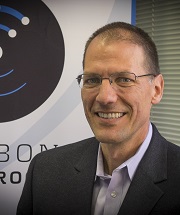Sunshine for Mines, a Rocky Mountain Institute and Carbon War Room initiative, aims to accelerate renewables adoption for mine sites. RMI and CWR are jointly a global nonprofit that works in various industries to facilitate investment into profitable low-carbon opportunities. They are working in the mining industry to help firms assess how renewables—solar, especially—could benefit them across their entire portfolio of mine sites, and then to quantify and realize that potential by conducting energy security analyses and brokering the RFP process with renewable providers.
Sunshine for Mines has been collaborating with Gold Fields, which recently announced an RFP for 40 MW of solar for its South Deep mine in South Africa. Through ongoing discussions with other mine operators, Sunshine for Mines is aiming to have five major mining operators on board, working toward the integration of 3 GW of installed renewables capacity in the next three years.
This week Jeff Erikson, Director of Global Projects at Carbon War Room, and Alastaire Dick, Operations Lead of Sunshine for Mines, share insights on their plans.
Q: What are your aims with Sunshine for Mines and how will you reach these goals?
JE: Broadly speaking, our goal is to make solar panels a normal feature on a mining site. Right now solar is small-scale on a few sites. Our hope is that, over the next 10 years, we will see a penetration rate of 15% of the entire mining industry’s electricity coming from renewables. That this is the way that business gets done.
We want to make it easier, faster, and less risky for mines to procure renewables from independent power producers. We are currently approaching individual mines for collaboration. Over the next 12–18 months, we will also be developing an information platform that can be used across the entire industry to gain knowledge and share best practices.
Q: What did you learn from your work with Gold Fields in assessing the business case for renewables at the mine’s sites?
JE: What was a surprise to me was the importance of improving energy security, in addition to the cost savings per kWh, in making the business case for renewables at mine sites. In the context of South Africa, where the grid is unreliable, avoiding costly electricity load curtailments for operating mines and ensuring a reliable energy supply is a really important part of the business case, on top of the fact that adding solar will reduce energy costs substantially.
AD: What was interesting was how each mine in the different regions [where Gold Fields operates] had such diverse  requirements when it came to energy and energy security. The Australian and Peruvian operations don’t have major energy security risks, whereas the operations in South Africa and Ghana have energy security concerns with load curtailment and aging infrastructure, respectively.
requirements when it came to energy and energy security. The Australian and Peruvian operations don’t have major energy security risks, whereas the operations in South Africa and Ghana have energy security concerns with load curtailment and aging infrastructure, respectively.
Q: How are your discussions with other mining leaders progressing?
JE: It has been very encouraging. I give all the credit to Gold Fields for being the first to partner with us in this work. Their participation has led others to have a look and see that there is something here for mines. We expect to be supporting several other mines soon, in similar and different ways. What is interesting is that renewables make sense not just in South Africa, but around the world, even with varying prices and availability of grid electricity or diesel fuel.
Q: Where do you see the biggest challenges in the market for project success?
JE: The biggest challenge is getting the attention of mine operators. There is a good reason for this: energy is not their core business. That’s where we come in to make it easy for them, by making sure the risks of adopting renewables vs. other options are clear. The other issue is momentum, but as we move towards a new normal it will become easier. Finally, the duration of a power purchase agreement (PPA) compared to the life-of-mine is a challenge at present.
AD: If any project takes more than two years to pay back, it typically falls out of the budget for a mine. So we need to open up the ‘mine mentality’ from a 2-year to a 20-year horizon. However, we are getting to a place that is very exciting where we have price parity (for renewables compared to conventional energy sources), and case studies of renewable installations to date in some places are exceeding expectations. There are also huge post-closure benefits to renewables, as they allow a mine to leave a legacy behind that can be very important to the business case. We don’t want mines to miss out on this opportunity.
RMI and CWR are hosting a half-day Sunshine for Mines workshop in association with the Energy and Mines London Summit on 27 January 2016. The workshop will convene senior mining executives and renewables experts in an interactive discussion, aimed at accelerating deployment of onsite renewables for mines.

